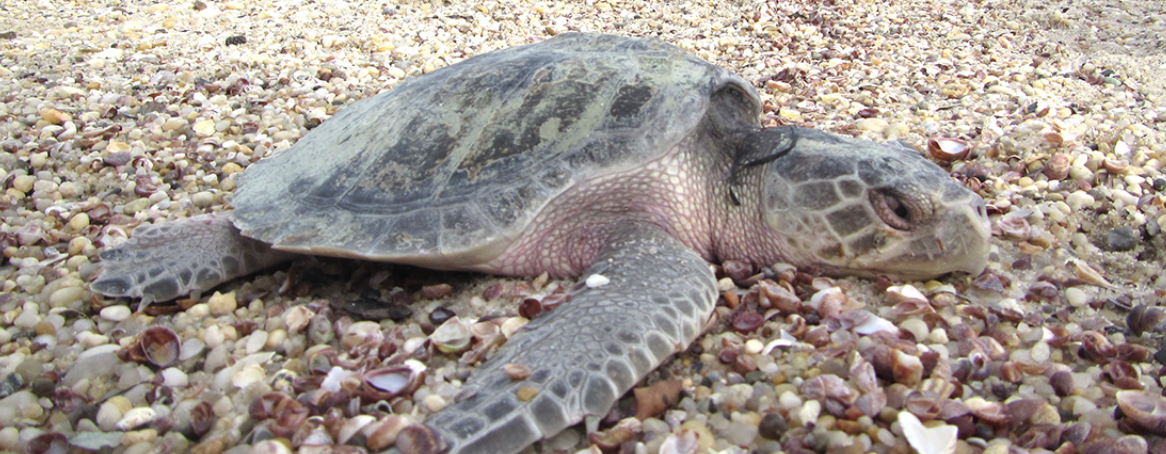Sea turtles are some of our planet’s most graceful creatures, rooming our planet for over 100 million years. But now, these animals face more challenges than ever, with all seven species either endangered or threatened. One of the issues they face is our rapidly warming climate, which is broadening their geographical range. While at first this seems like it would be beneficial for a species, it has proven to be ever so challenging for these turtles.
It is not uncommon to spot a sea turtle in New England waters, especially towards the end of the sumer and beginning of fall, when ocean water is the warmest. Typically the species found around here consist of Greens, Kemps Ridleys, Loggerheads, and the occasional Leatherback. With ocean temperatures increasing, scientists are seeing more and more sea turtles in New England every year. With this increasing abundance, it is only natural that we see an increasing amount of turtles that need our help. These turtles encounter boat strikes, entanglements, but most commonly in our region, it is cold stunning.
Cold stunning is a hypothermic reaction sea turtles have to cold temperatures due to the inability to regulate their internal temperature. On average, sea turtles never really encounter this scenario because the water temperature in their geographical range doesn’t often drop that much. With climate change, these turtles are traveling further up the coast, but that means that they must travel further down the coast as well. Due to the geographical shape of Cape Cod, a lot of turtles have difficulty navigating around this peninsula before the water gets too cold. When sea turtles are cold stunned, their body functions slow down significantly. This makes it difficult for them to swim, putting them at risk of drowning. These turtles will end up involuntarily washing up ashore, with shallow breathing, slowed heartbeat, and slowed blood circulation. In 2024 alone, there were over 700 cold stunned sea turtles rescued and rehabbed in New England, mostly from Massachusetts (New England Aquarium, 2025).
The rehabilitation process for cold stunned sea turtles is not as easy as throwing them into some warm water to heat them back up and send them on their way. There is a lot of work that must be done to ensure these turtles are able to be released back into the wild. Extensive veterinary care must be administered to each turtle, whether it is just slowly warming up their water, or as far as treating pneumonia or any other injuries sustained during cold stunning. Because they lose a lot of their strength during stunning, it takes a while for them to start eating again, obviously depending on the severity of their condition. They must gain swimming strength and sustainable eating habits in order to be deemed releasable again.
While it is difficult to deal with this issue, there are things you can do to help. If you see a stranded sea turtle, do not touch it or try to move it back into the water. Instead, keep your distance, and call a rescue hotline in the coverage area. You can do this by simply looking it up online. You can also make sure others keep their distance too, and wait until trained professionals get there. Our planet is warming up because of us, so it is absolutely our responsibility to make sure these sea turtles are able to make it back home. With all of us pitching in, we can truly make a difference.

Cold Stunned Sea Turtles… Why they need our help.
Posted In: Uncategorized